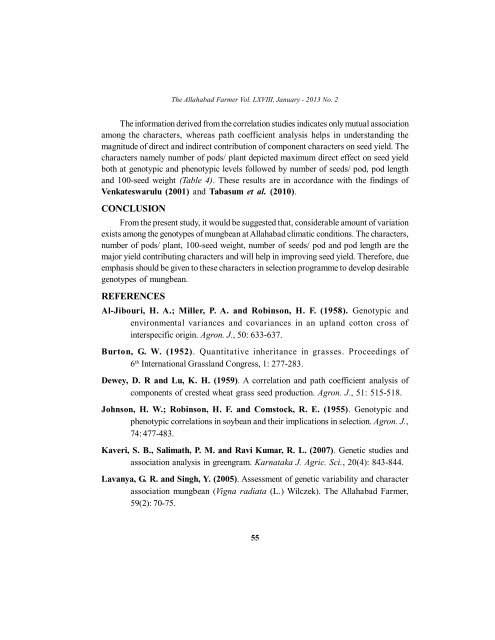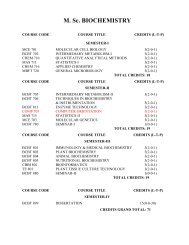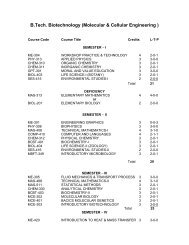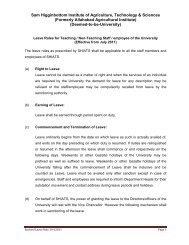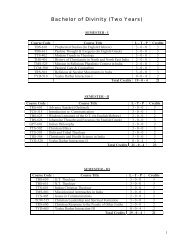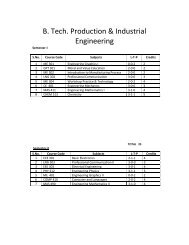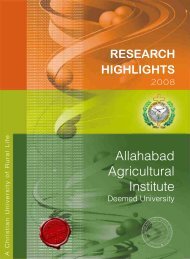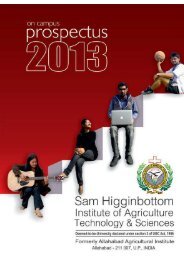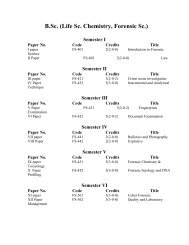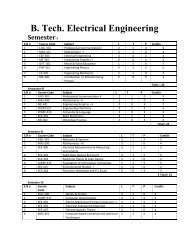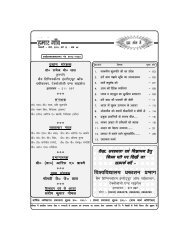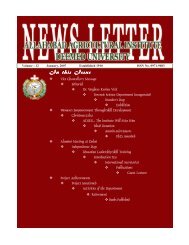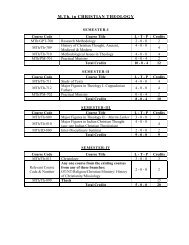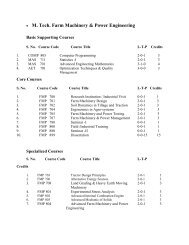Study of Hygienic practices of street food vendors in ... - Shiats.edu.in
Study of Hygienic practices of street food vendors in ... - Shiats.edu.in
Study of Hygienic practices of street food vendors in ... - Shiats.edu.in
You also want an ePaper? Increase the reach of your titles
YUMPU automatically turns print PDFs into web optimized ePapers that Google loves.
The Allahabad Farmer Vol. LXVIII, January - 2013 No. 2The <strong>in</strong>formation derived from the correlation studies <strong>in</strong>dicates only mutual associationamong the characters, whereas path coefficient analysis helps <strong>in</strong> understand<strong>in</strong>g themagnitude <strong>of</strong> direct and <strong>in</strong>direct contribution <strong>of</strong> component characters on seed yield. Thecharacters namely number <strong>of</strong> pods/ plant depicted maximum direct effect on seed yieldboth at genotypic and phenotypic levels followed by number <strong>of</strong> seeds/ pod, pod lengthand 100-seed weight (Table 4). These results are <strong>in</strong> accordance with the f<strong>in</strong>d<strong>in</strong>gs <strong>of</strong>Venkateswarulu (2001) and Tabasum et al. (2010).CONCLUSIONFrom the present study, it would be suggested that, considerable amount <strong>of</strong> variationexists among the genotypes <strong>of</strong> mungbean at Allahabad climatic conditions. The characters,number <strong>of</strong> pods/ plant, 100-seed weight, number <strong>of</strong> seeds/ pod and pod length are themajor yield contribut<strong>in</strong>g characters and will help <strong>in</strong> improv<strong>in</strong>g seed yield. Therefore, dueemphasis should be given to these characters <strong>in</strong> selection programme to develop desirablegenotypes <strong>of</strong> mungbean.REFERENCESAl-Jibouri, H. A.; Miller, P. A. and Rob<strong>in</strong>son, H. F. (1958). Genotypic andenvironmental variances and covariances <strong>in</strong> an upland cotton cross <strong>of</strong><strong>in</strong>terspecific orig<strong>in</strong>. Agron. J., 50: 633-637.Burton, G. W. (1952). Quantitative <strong>in</strong>heritance <strong>in</strong> grasses. Proceed<strong>in</strong>gs <strong>of</strong>6 th International Grassland Congress, 1: 277-283.Dewey, D. R and Lu, K. H. (1959). A correlation and path coefficient analysis <strong>of</strong>components <strong>of</strong> crested wheat grass seed production. Agron. J., 51: 515-518.Johnson, H. W.; Rob<strong>in</strong>son, H. F. and Comstock, R. E. (1955). Genotypic andphenotypic correlations <strong>in</strong> soybean and their implications <strong>in</strong> selection. Agron. J.,74: 477-483.Kaveri, S. B., Salimath, P. M. and Ravi Kumar, R. L. (2007). Genetic studies andassociation analysis <strong>in</strong> greengram. Karnataka J. Agric. Sci., 20(4): 843-844.Lavanya, G. R. and S<strong>in</strong>gh, Y. (2005). Assessment <strong>of</strong> genetic variability and characterassociation mungbean (Vigna radiata (L.) Wilczek). The Allahabad Farmer,59(2): 70-75.55


